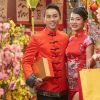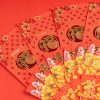
China today is one of the very few places on earth where modernity and high-tech cultures can still exist hand-in-hand with tradition.
In big cities like Shanghai or Beijing, it’s very common to see kids with the latest, most advanced smartphones and tablets, but at the same time, their traditional, outdoor activities are still alive and kicking.
Another unique thing is that in China, outdoor traditional games are not only popular with children, but also with the young adults and the elderly. It’s common to find Chinese parks full of young and old people engaging in various traditional sports and games.
Below, we will discuss some of the most popular traditional games and outdoor activities in China.
Chinese shadow puppetry (皮戏, píyĭngxì)
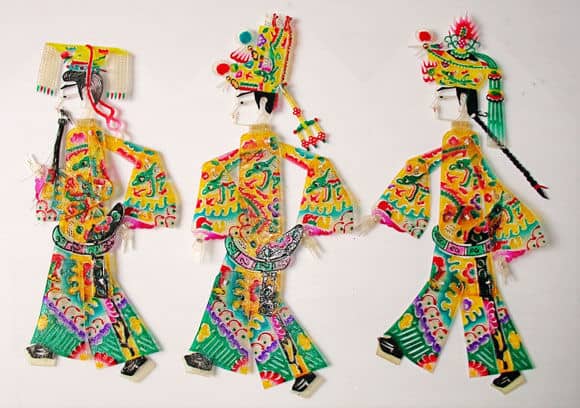
Chinese shadow puppetry—or shadow play—, was originated in the Han dynasty, around (221 BCE to 206 CE221), but peaked in popularity during the Tang (618-907) and Song (960-1279) dynasties.
In a nutshell, shadow puppetry is two-dimensional figures (made of paper, cotton, leather, and other materials) that are placed behind a screen—back then, a thin white cloth—. A light source casts shadows on this screen, and the puppeteers will then manipulate the figures to tell a story with movements, often accompanied by sung narrations.
Legend said a minister of the Han Dynasty happened to see children playing with dolls, and noticed the shadow movements on the floor. He hit upon an idea, and then made a cotton puppet of the emperor’s favorite concubine.
The minister showed the very first shadow play to the emperor, and the tradition stands until today. This story is recorded in the historical Book of Han (Encyclopedia Britannica) and is believed to be the origin of Chinese shadow puppetry.
As mentioned, Shadow puppetry became quite popular during the Song dynasty, with holidays are often accompanied with many shadow puppetry shows.
During the time of the Ming dynasty (1,368 CE-1,662 CE), history recorded that there were 50 shadow puppet troupes in Beijing alone. Back then, the storytellers typically used shadowplay to tell stories surrounding historical events (famous wars, etc.) or Buddhist religious stories.
Chinese shadow puppets are initially made of paper sculpture but are then replaced with donkeys or oxen leather.
This is where the name píyĭngxì came from, pi ying literally meant shadows from leather puppets. Chinese shadow play is not entirely a show of shadow, but more of a silhouette where the figures still retain some color on the screen.
Today, the art is facing extinction, and slowly replaced by a more modern art form: the motion picture.
More information about Shadow Puppetry in our article “Chinese Shadow Puppetry Facts and Stories” –Opens in a new tab.
Click here to see some awesome Shadow Puppets.– Opens in new tab.
Chinese Rattle drum, Tao (鼗) or taogu (鼗鼓) or bolanggu (拨鼓)

The rattle-drum is one of the oldest toys in China, with the earliest form believed to have appeared as early as the Warring States Period (as early as 403 BCE). Back then, it was strictly a percussion instrument and only in the time of Song dynasty (around 1,000 CE) that the rattle-drum enjoyed huge popularity as a toy for children.
The rattle drum is a small, double-sided membranophone with a handle. A wooden ball (or pellet, hence it’s also often called “pellet drum”) is hung from a string, attached to each end to beat the drum. It is mainly played by swaying the handle, so the balls—or pellets— will beat the drum from both sides, producing a rattling sound.
The rattle drum is also a popular instrument used as noisemakers by street vendors, not only in China but also in Korea, Tibet, Taiwan, Mongolia, India, and throughout East Asia.
This is mainly due to the rhythmic, rattling sounds of the instrument, which are easy to draw attention with. Street peddlers often shouted in cadenced, happy voice together with the rhythmic sounds, literally “drumming-up” business.
Even today, we can still find these rattle drums at temple festivals and fairs, with a lot of stalls selling these pellet drums.
Click here to see some Chinese Rattle drum designs .– Opens in new tab.
Chinese shuttlecock (Jiàn Zi, (子), tī jianzi (踢子), tī jian (踢) or jianqiú.
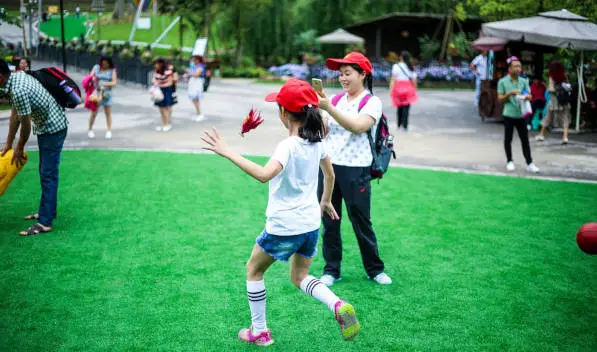
The jianzi—”Shuttlecock”, is still a favorite traditional game in China, which has been around for centuries and enjoyed by both adults and children of any social backgrounds.
The game itself is pretty simple—not saying it’s easy—, with just one rule: keep the shuttlecock in the air without using the hands. Mainly, we try to get as many kicks as possible without dropping the jianzi. There are various techniques that have been developed over the years from simple kicking to acrobatic heading to powerful overhead kicks.
In China, the sport usually has two main forms: 5 to 10 people circling and kicking the shuttlecock, and “duel Jianzi”, with two kickers or two teams playing against each other, much like soccer. A competitive, government-run game called jianqiu is played on a rectangular court divided by a net — like badminton with kicks instead of rackets—.
According to Chinese legends, Jianzi originated from an ancient game from the Han dynasty called cuju, so it has been around for more than 2,000 years. Today, Jianzi is gaining popularity all around the world including in the U.S. and Europe, both as a recreational game and formal sport.
Click here to see some Chinese Shuttlecock designs .– Opens in new tab.
Chinese Yoyo (Dǒu Kōng Zhú,空竹)

The Dǒu Kōng Zhú—known in the west as diabolo or diablo—is a traditional Chinese toy characterized by two equally-sized “bells” or “discs” that are connected in the middle by a horizontal piece of wood (today, replaced with plastic). The toy will spin on a string, attached to two wooden sticks held in both hands.
The original, Chinese version of the Dǒu Kōng Zhú produces a whistling or humming sound as air passes through the sides when it is spun, giving the nickname “wind bell”, or “empty bell”.
As the player grows in skills, the Chinese yo-yo can be played with a wide variety of tricks and techniques, similar to western yo-yo. However, since the Dǒu Kōng Zhú is not attached to the string, it can be tossed around for more variety in tricks, and can even be passed between people.
Historically, the oldest reference to the Tzuh-ling, “empty bell”, was found in the annals of the Ming Dynasty from around 1,386 CE to 1,644 CE. Back then, the yo-yos were made from bamboo or wood—both materials are still popular today in China—, but today the Chinese yo-yos are often made of the more durable plastic.
Today, Chinese yo-yo performers are still often found in Chinese festivals, especially in the northern parts of China during the spring season.
Click here to see some Chinese Yoyo designs.– Opens in new tab.
Chinese jump rope (Tiào Pí Jīn, 跳皮筋)
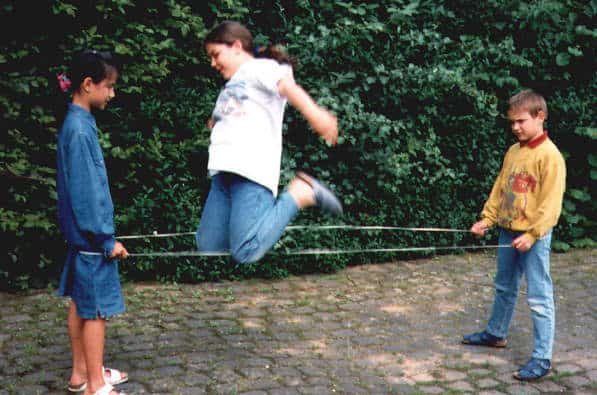
The Tiào Pí Jīn, literally meant “rubber band jump rope”, and also often called iào xiàng pí shéng or “jump the rubber rope”, is a traditional Chinese game played by at least three players: two players held the long rubber band with their legs, typically around 16 feet in length tied to a circle.
These two players typically stand around 9 feet apart from each other, and the third player jump “inside” the rope and tries to perform a series of moves without passing or making an error—often accompanied by singing—. There are many jump patterns to follow, and most of them have their own songs.
As the jumper moves through the levels, the position of the string is raised from ankle to waist and finally to the chest, so the jumping will be more rigorous and difficult. As the rope gets too high to jump over, the player can either kneel and use their hands to finish the pattern, or simply stop the game at this point.
The Tiào Pí Jīn is believed to be originated from the time of the Tang dynasty, around the 7th century CE. It gained popularity in the west around the 1960s, with adapted names like gummitwist in German or elastics in England.
Check out our “Free Culture Library“. We have compiled some great free resources, about Chinese culture, for your research.
Chinese kites (Zhiyuan)
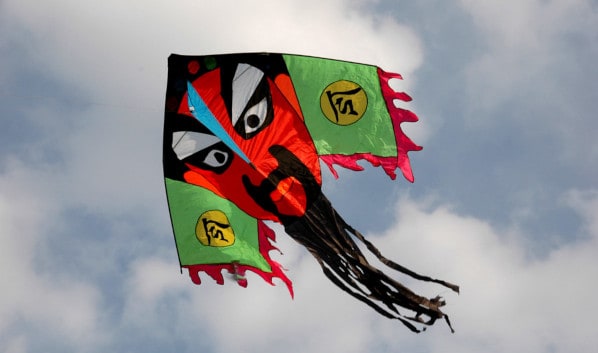
The Chinese kite called Zhiyuan in northern China and Yao-zi in southern China is both a traditional folk handicraft and traditional toy for Children. The most popular kites in China today originated mainly from Beijing, Weifang, and Tianjin.
According to Chinese history, Chinese kites first appeared during the Spring and Autumn Period, around 700-476 BCE, the philosopher Mo Zi, or Mo Tse, originally designed the kite as a military technology to spy on the situation of the enemy from the air.
However, the technology was only realized far later in 200 BCE, during the Chu-Han War, when general Zhang Liang ordered his troops to fly kites in the heavy fog. Children sat on these large kites and played songs on flutes.
The Chu warriors, according to legend, missed their homes hearing the melodies and scattered without fighting.
During the Tang dynasty (618-900 CE), kites have transformed to be traditional art. Making and flying kites were then associated with the pleasing season of spring, and until today is still believed to be a symbol of health and prosperity. (Further reading: “Chinese Kites History and Origin” and “Historical and Modern Facts about Chinese Kites“)
Click here to see some Chinese Kites designs – Opens in a new tab.
Online Courses about Chinese Culture from Udemy (Aff.link)
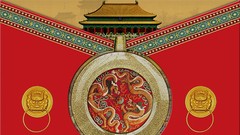
Stay in Touch
 Join our newsletter by using the forms on this website or click here!
Join our newsletter by using the forms on this website or click here! Follow us on Google News
Follow us on Google News Follow us on Facebook
Follow us on Facebook


